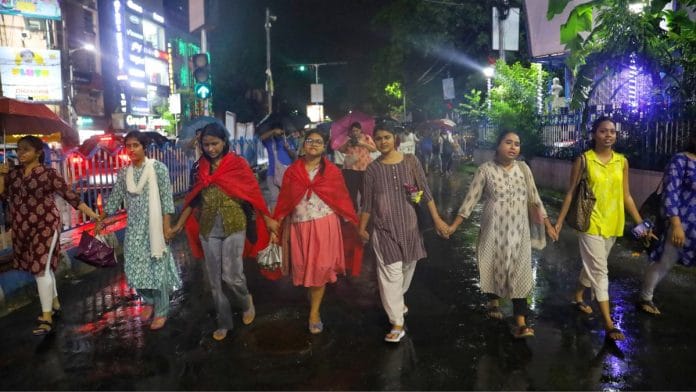Kolkata: A motley group of 17 young women gathered in a big, dimly lit seminar hall of Calcutta Medical College late Wednesday evening. Many of them had arrived after a long day at work, braving incessant downpour that led to massive traffic snarls across the city.
The group, comprising current and former students of Calcutta University, Presidency College, Jadavpur University, a government school teacher, two assistant professors, an editor of a magazine and a transgender activist, among others, had assembled to discuss a pressing issue—how to take the ‘Reclaim the Night’ movement forward and prevent it from fizzling out.
“It’s not enough to just talk about bringing about change. We need to have a strategy in place to take it forward. We need to collaborate with others… women, students, organisations, common people, not only in the city, but also in rural and mofussil pockets to keep the momentum of 14 August going. We need to make it more heterogeneous,” one of them said forcefully.
Another woman, dressed in a blue kurta and jeans, got up to speak, “The issue of safety of women at the workplace has to be addressed now by the authorities. The situation of women has remained the same for a long time.” Some nodded in unison.
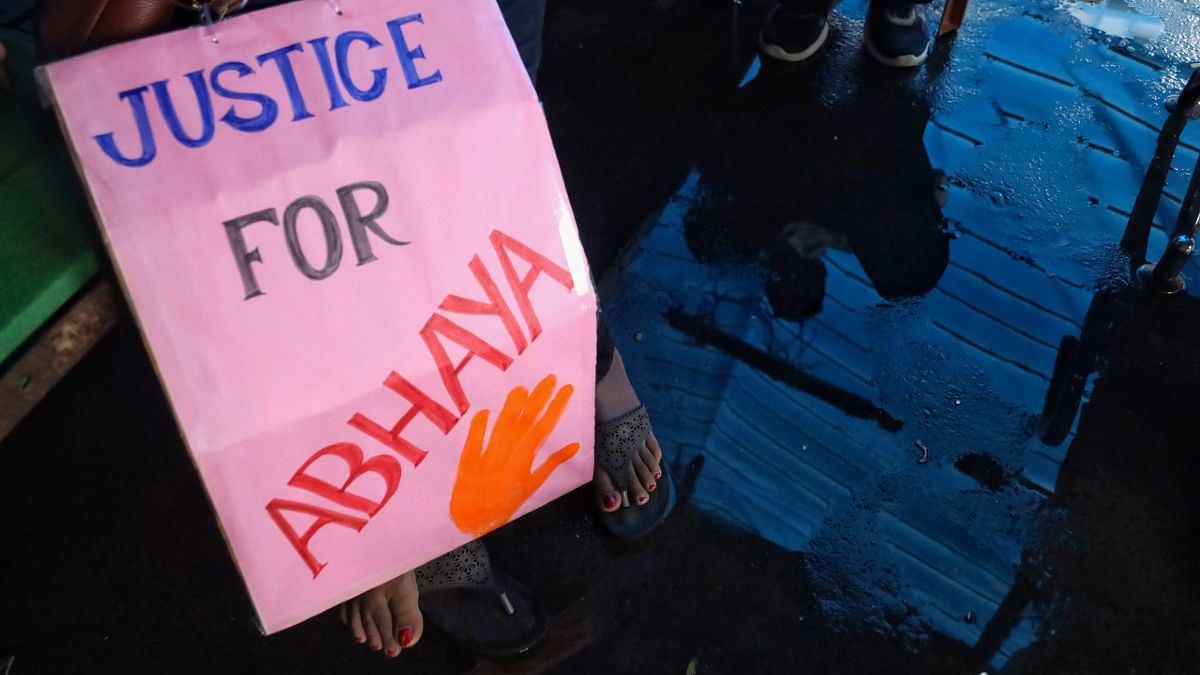
A third woman stood up and said that a date needed to be fixed for the next protest march and responsibilities assigned to everyone present in the hall for coordination in different parts of the city and other districts of West Bengal.
The ‘Reclaim the Night’ march on 14 August saw thousands from different walks of life—students, housewives, professionals, senior citizens—take to the streets of Kolkata and elsewhere at midnight to demand justice for the junior resident doctor, who was raped and murdered while on night duty at RG Kar Medical College and Hospital the previous week. The incident led to nationwide outrage, forcing the Supreme Court to intervene.

These women were among key leaders of protest marches held in different parts of Kolkata. Initially planned at three sites—Jadavpur, Academy of Fine Arts and College Street—it soon spread across the city, with a deluge of people stepping out spontaneously. It was a type of movement that the city of Kolkata had not witnessed in a long time.
Even these young organisers, many of whom are associated with different factions of Marxist-Leninist groups, like the All India Progressive Women’s Association, had not anticipated the massive response.
Barsha Baral, a Master’s student at Jadavpur University, said they had anticipated a turnout of around 200-300 people.
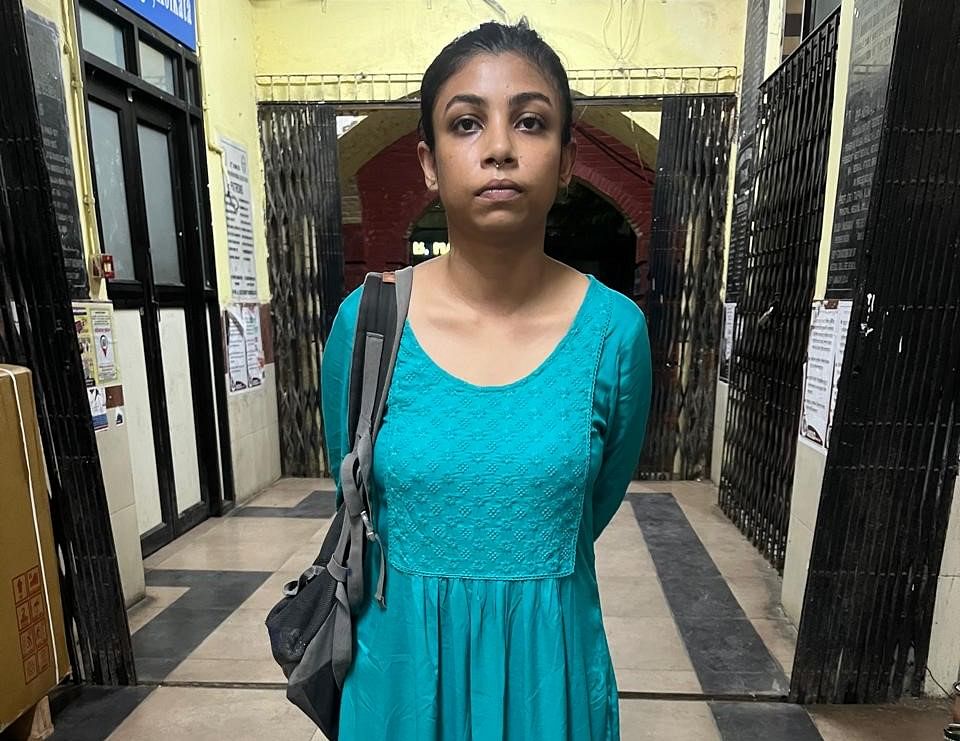
“We had kept around 100 chairs at the Jadavpur protest site for people, including senior citizens, to sit in case some of them turn up. But a little after midnight, what we saw left us dazed. Over 5,000 people assembled at the site. I have not seen this kind of a crowd at a protest called by students. A lot of old people also came,” Baral, who was among those present at Wednesday’s meeting, told ThePrint.
Also Read: Kolkata has a Trust Deficit Disorder. RG Kar rape shows it’s reaching tipping point
Genesis of ‘Reclaim the Night’ movement
The build-up to the protests on 14 August started rather innocuously.
Shatabdi Das, a former Calcutta University student, who currently teaches English in a government school, had written a piece for an online news portal, Robbar Digital, on 10 August, titled ‘Come, reclaim the night’, a nod to a 1977 movement of the same name in Leeds, England, when women protested against the local police’s request for women to stay at home after dark in the wake of the murders of 13 women by a serial killer.
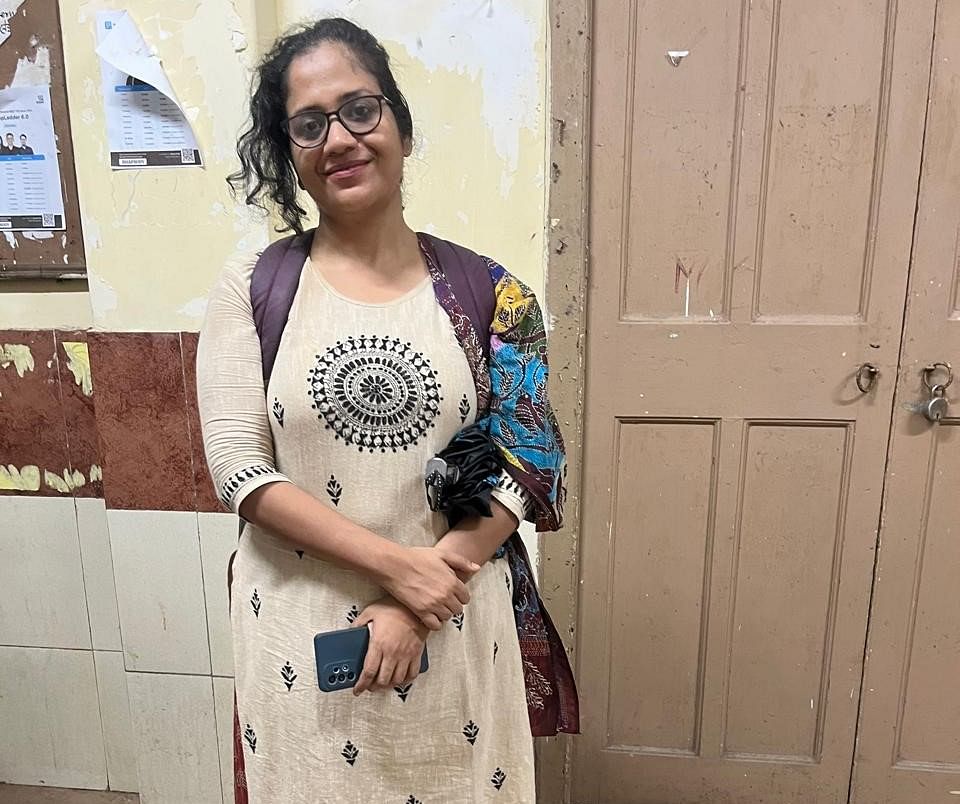
In her article, Das called upon the women of the city to take to the streets at midnight. “… to rule over Kolkata at night, 100 women will be enough for us. Are you interested? You are welcome…” it read. Once her article was published, Das posted it on her Facebook page and it started generating a huge response.
Parallelly, a social science researcher from Jadavpur University, Rimjim Sinha, posted on her Facebook page urging everybody to step out on the intervening night of 14 and 15 August to claim Kolkata’s streets and protest the brutal crime at the state-run hospital.
In her post, Sinha said she was outraged by the statement of the then RG Kar Medical College principal, Dr Sandeep Ghosh, who had questioned why the junior resident doctor, who was raped and murdered, was alone in the seminar room. Sinha wrote that she had decided to spend the Independence Day eve outside.
The post quickly went viral, with many expressing their willingness to join.
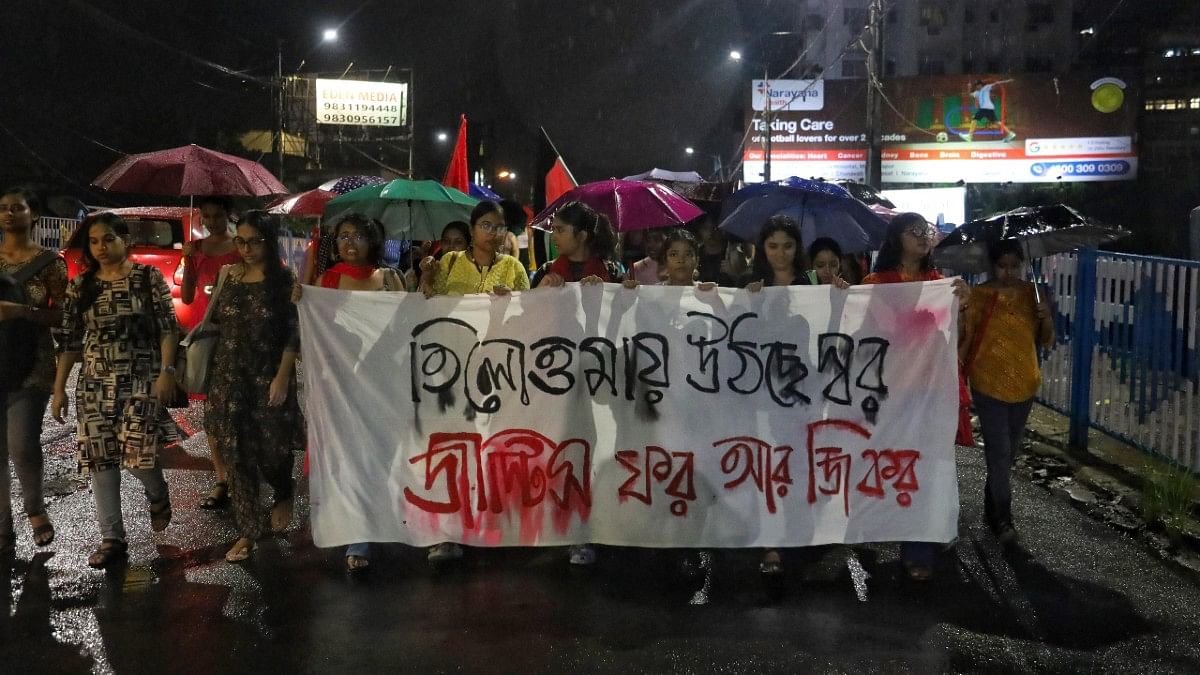
One thing led to another, and Das connected with some of the student groups in Jadavpur University to organise the protest. Posters made overnight inviting people to join were shared online. It had the phone numbers of Das and another university student.
Social media platforms—Facebook, Instagram and X—came in handy to amplify the message across the state and elsewhere in a short span of time. “In the next 48 hours, I received close to 500 calls from individuals from different walks of life, who wanted to join the protests, and wanted to know how they could contribute,” Das told ThePrint.
Das, some students and a few working professionals then joined hands.
The women organisers had connected twice online, prior to the 14 August march, to discuss logistics and coordination. But buoyed by response that night, they decided to meet physically and chalk out a future course for the movement.
Also Read: RG Kar Hospital’s resident doctors have deserted the campus. Those left behind are living in fear
‘Politically conscious, but apolitical’
Wednesday’s meeting was the second one so far. “We don’t want the movement to dissipate after the huge turnout on 14 August. That’s why the core group of organisers are meeting to chalk out the future plan,” said Sampriti Mukherjee, a former MPhil student at Jadavpur University, who currently works in Sanjog India, a Kolkata-based NGO.
Many among them are affiliated to different wings of CPI(ML), but reiterated that they have consciously kept party politics out of the movement. “All of us are politically conscious, but this is an apolitical, decentralised movement… there is no leader. It’s a feminist movement… a gender movement that has connected us all,” said Mukherjee.
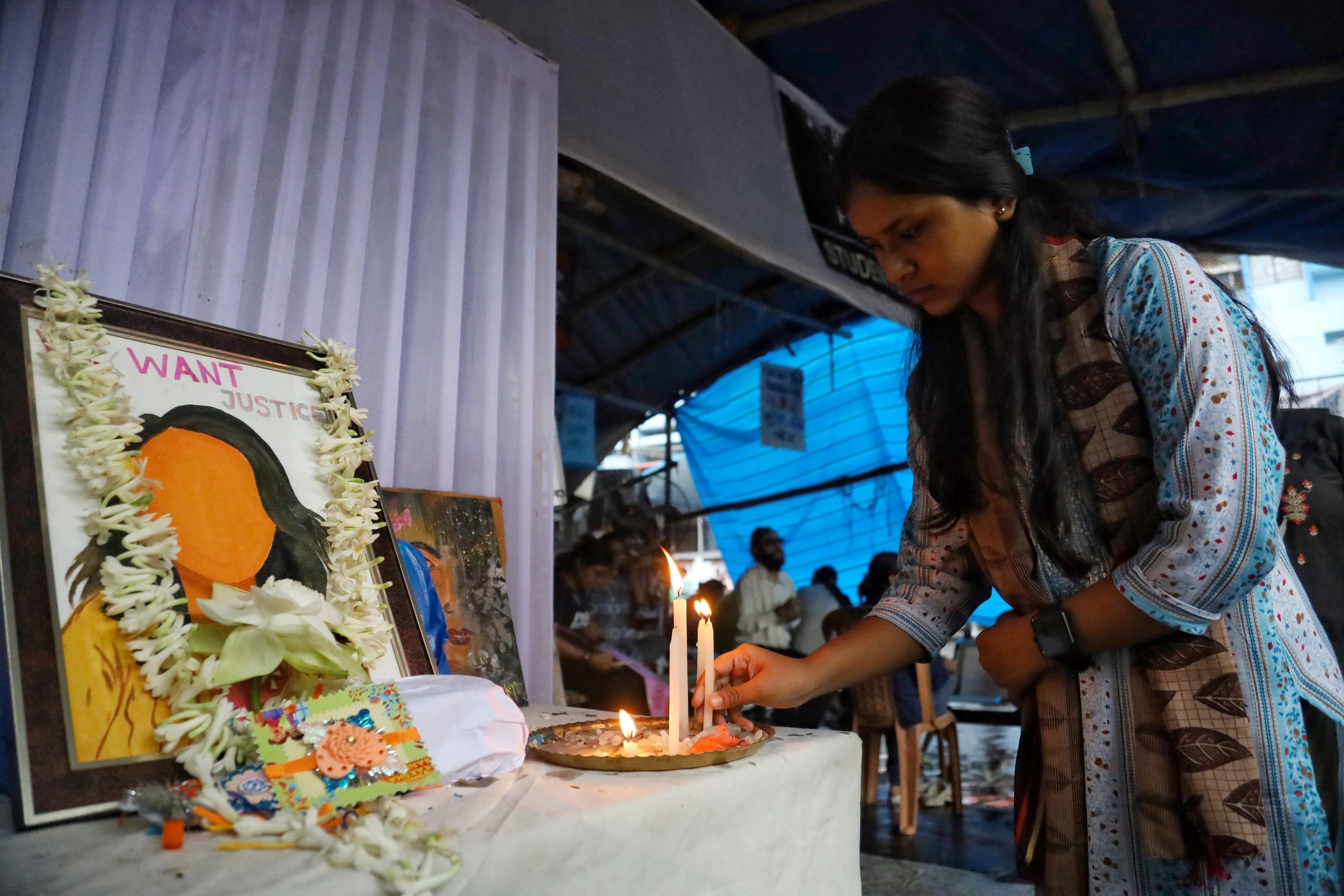
However, many felt it was this inherent contradiction of being “politically conscious”, but keeping the movement “decentralised, leaderless and apolitical” that led to it losing steam after the momentous build-up to the protest march.
“You need leadership… somebody to guide a movement like this and take it forward. You need a charter of demands, a strategy. Otherwise, it is difficult to sustain a movement, and ensure that there is definitive action by the government on the larger demand to ensure safe workplaces for women,” said a Kolkata-based lawyer, who did not wish to be named.
The lawyer has filed a petition before the high court.
Trinamool Congress (TMC) leaders, on condition of anonymity, conceded that in the early days of the protest—the 14 August march and the vandalism at RG Kar the same night—the Mamata Banerjee-led government in the state was feeling the heat.
“There was a lot of anger among the common public over the way the case was being handled. The mass outrage was evident in the spontaneous turnout on 14 August. The pressure, in fact, forced the chief minister to take to the streets herself and demand justice. But now, the so-called movement is fizzling out. There is no threat to the government whatsoever,” a TMC leader told ThePrint.
Asked about who was leading the movement, Jhelum Roy, a PhD student at Jadavpur University who attended Wednesday’s meeting, said, “We do not have one leader… It is being led by women and gender activists.”
The “leaderless” protest that Das and Sinha started has since been replicated elsewhere in the state by different organisations and political parties.
Kolkata and some other districts of West Bengal continue to see protest marches by different groups, including doctors, IT professionals, students, leaders of the youth wings of Bharatiya Janata Party (BJP) and Communist Party of India (Marxist), and Students’ Federation of India (SFI), among others. But the numbers are slowly dwindling.
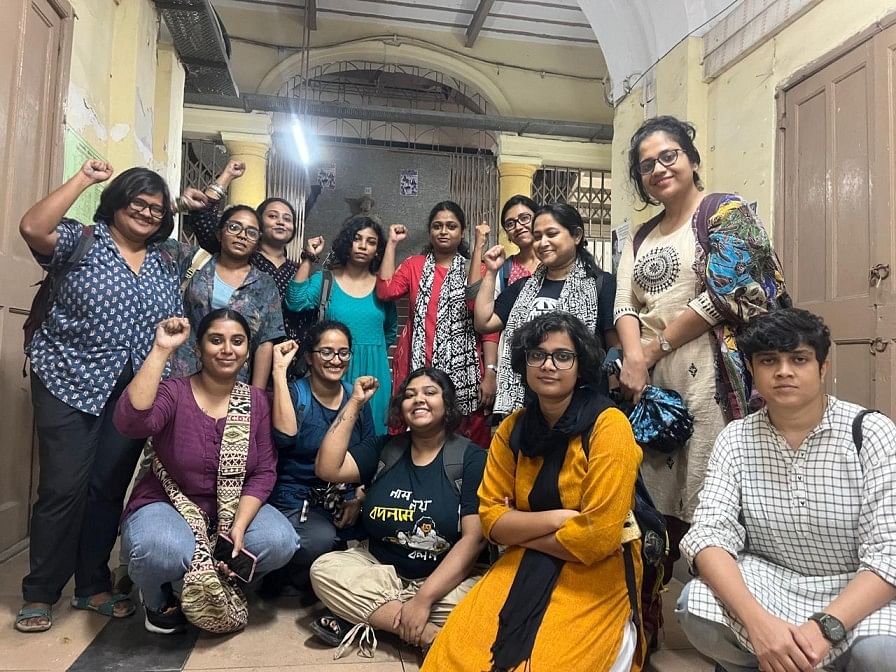
As the women sat on the wooden benches of the seminar hall Wednesday, they were not oblivious to the slowdown of the movement. For nearly two hours, they discussed plans to hold another big march, but could not arrive at a common date. “We will discuss with other members after the high court hearing Thursday, and take a call,” said Shatabdi Das.
Around 9.20 pm, the women decided to wrap up. It had been a long day for all of them, said Kolika Mitra, an assistant professor at a local college.
“We finished our classes and then came here. Since 14 August, it’s been like this. Our routine has gone completely haywire. There has been so much work to do for coordination that I have hardly slept in the last few days,” she said.
With the Supreme Court grilling the West Bengal government over the state police and college principal’s handling of the case, the authorities have swung into action.
The state government has removed the top four officials at RG Kar, including the acting principal appointed less than a week ago. The case has been handed over to the Central Bureau of Investigation (CBI). The Kolkata High Court is also hearing the matter. After the apex court urged doctors to call off their protests, many have resumed work.
But undergraduate and postgraduate students, some of whom were friends and colleagues of the victim, continue to hold vigil, demanding quick punishment for the accused.
(Edited by Mannat Chugh)
Also Read: Dada leaves Didi’s side on RG Kar. Mamata Banerjee left high & dry as allied voices turn critical



